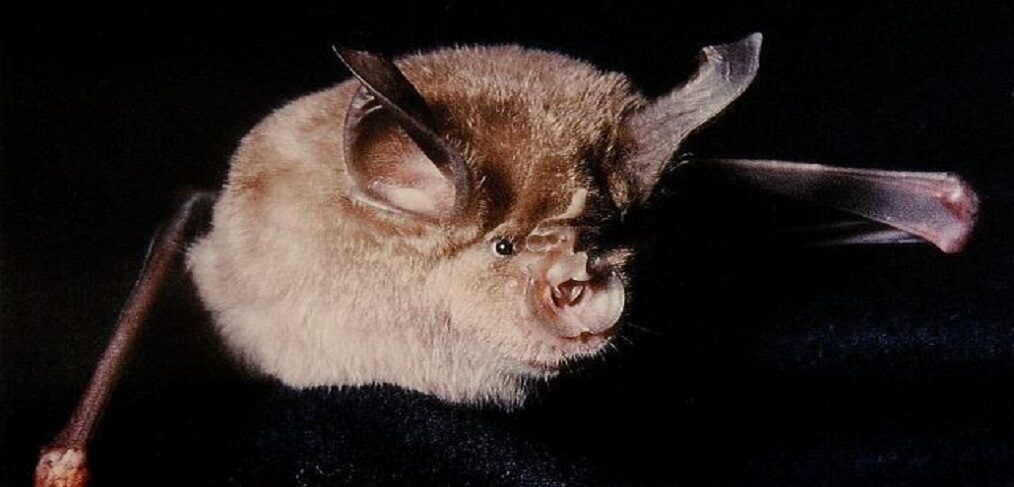
Species of the week #18 (KW 21-2020) – the great horseshoes bat
| Distribution status | Extremely rare |
| remains | Mayen, only male animals, sightings along the Moselle, Sauer, Saar |
| Last sighting in Rhineland-Palatinate | current |
| Habitat | gardens, orchards, structurally rich forest |
| fringes | Threats to traffic, insect death, lack of habitats |
More:
The Great Horseshoe Bat (Rhinolophus ferrumequinum) is one of the largest bat species in Europe. It has a wingspan of 35 to 40 cm, a head-body length of 5.6 to 7.1 cm and a body weight between 17 and 34 grams. The most striking feature is the horseshoe-shaped nose attachment, which gives all horseshoe noses their name. This nose allows her to bundle the ultrasound signals.
The large horseshoe bat uses different habitat types, with a rich selection of large insects. For hunting, she prefers mosaic-like, extensively used cultural landscapes, rich in natural border biotopes and hedges. Several areas with a total of 6-7 hectares around the nursery must be available as a hunting area. As a heat-loving species, the large horseshoe bat inhabits caves and tunnels, but above all warm, undisturbed roof stores and church towers with temperatures of around 10 ° to 37 ° C as summer quarters. In winter, the Great Horseshoe Bat stays in cooler caves, tunnels or cellars, in which the ambient temperature can fluctuate between 5 ° and 12 ° C and in which the air humidity is very high.
The only nursery known in Germany, i.e. a neighborhood where children are raised, is in Hohenburg in Bavaria. The current Rhineland-Palatinate localities of the Great Horseshoe Bat focus on the valley systems of the Moselle, Saar and Sauer. These are migratory males or individual overwintering animals.
The use of insecticides in agriculture reduces the amount of beetles and flies in the hunting areas and deprives the Great Horseshoe Bat of the food base. Combating parasites with ivermectin and avermectin in animal husbandry poses an additional threat: the active ingredients can still be found in the manure; if it is spread on fields, the occurrence of dung beetles and dung flies will decrease drastically.
The low flight altitude of this bat species often leads to collisions with vehicles.
Politically necessary:
• Securing and creating bat roosts
• No new streets in known quarters
• Reduce the use of insecticides and antiparasitics in agriculture
• Promotion of extensive agriculture
Image: By Prof. emeritus Hans Schneider (Geyersberg) – Own work, CC BY 3.0, https://commons.wikimedia.org/w/index.php?curid=23957687
